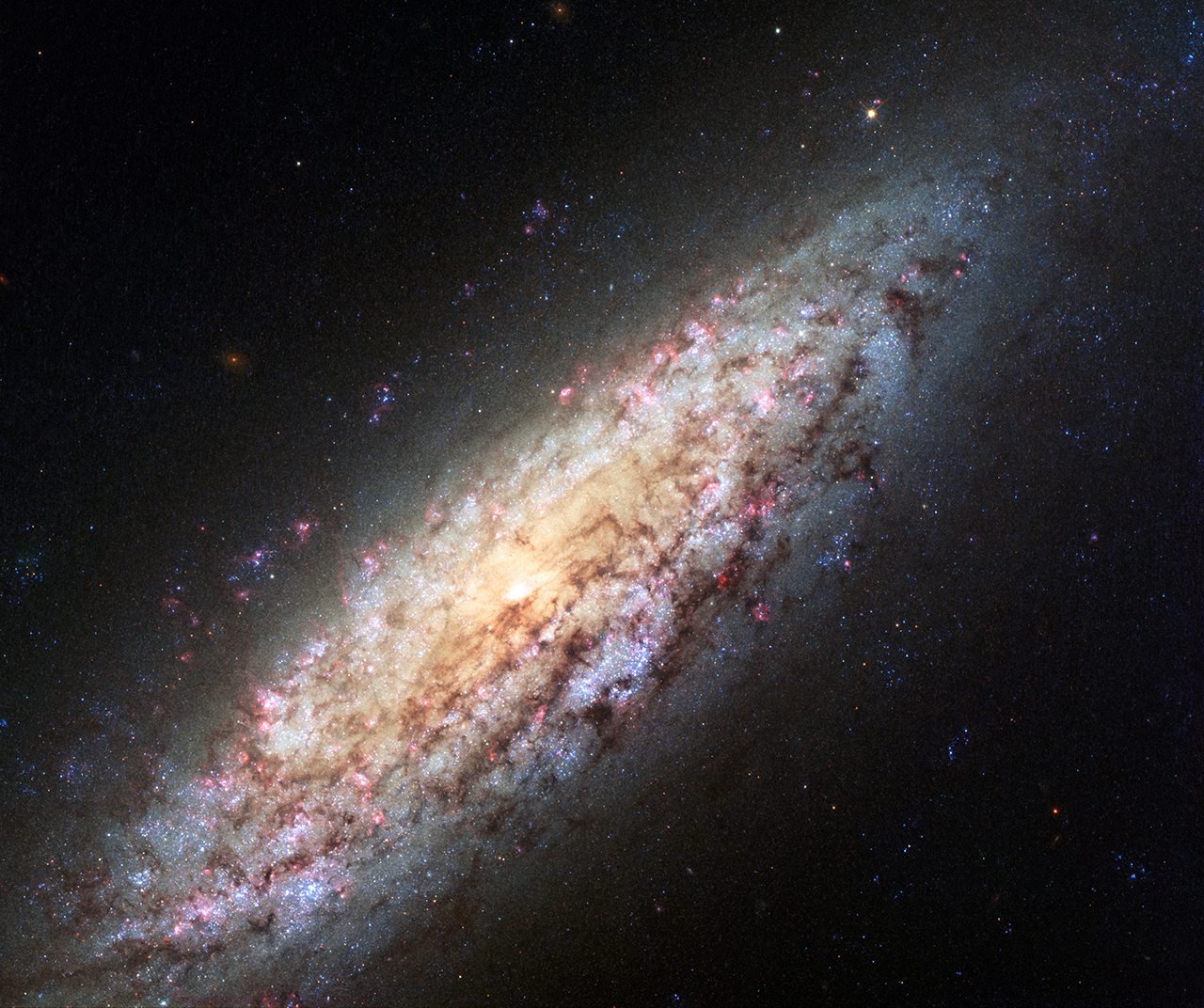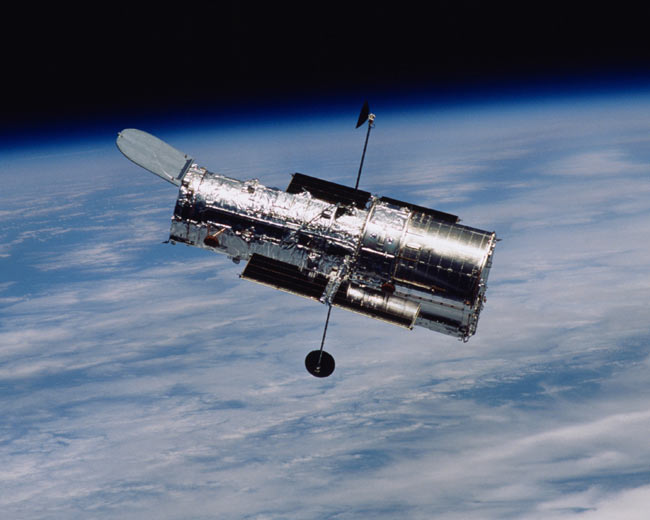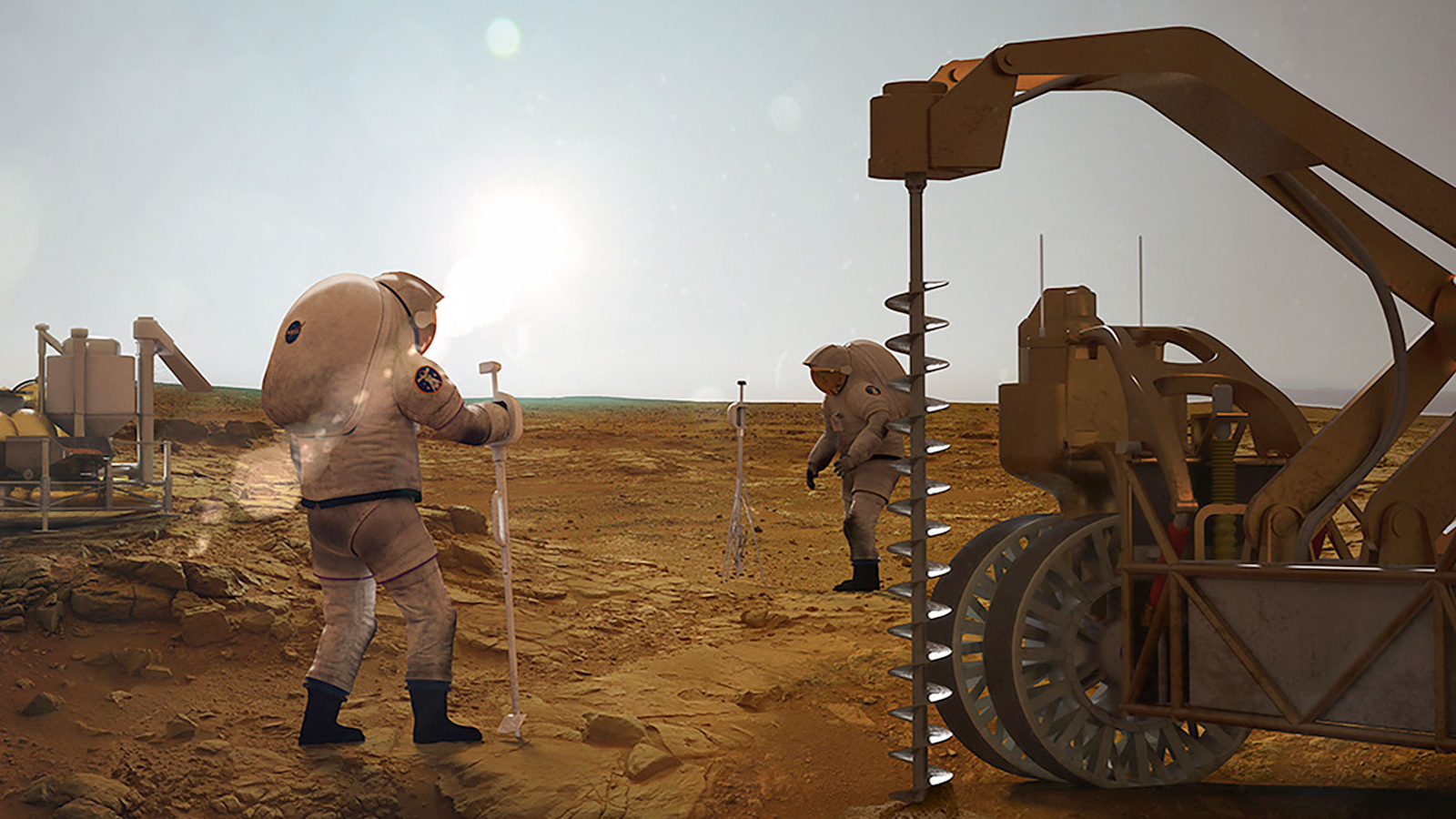This Lonely Galaxy Looks 'Lost In Space' in Hubble Telescope Photo

Poised on the edge of a galactic desert is NGC 6503, a galaxy that appears so alone in the universe that some scientists have called it "lost in space."
The galaxy takes center stage in a new image from the Hubble Space Telescope, which shows NGC 6503 shining in visible and ultraviolet light, with different colors denoting zones of gas and star birth. NASA and the European Space Agency unveiled the image on Wednesday (June 10).
In the image, galaxy NGC 6503 appears to stand alone beside an area dubbed the Local Void, a cosmic dead zone that is at least 150 million light-years across. The galaxy itself is about 18 million light-years from Earth in the constellation Draco. [Latest Photos from the Hubble Space Telescope]
"The galaxy's odd location on the edge of this never-land led stargazer Stephen James O'Meara to dub it the 'Lost-In-Space galaxy' in his 2007 book, Hidden Treasures," NASA wrote in an image description that labeled NGC 6503 "lost in space."
Hubble's image shows a variety of zones within the image, which is about 30,000 light-years across or a third of the size of the Milky Way.
Red patches in the image denote gas, blue contains new stars, and dust lanes (in dark brown) stretch across the lighter arms and center of the galaxy.
The images are based on two sets of observations collected by Hubble, first in 2003 (by the Hubble Advanced Camera for Surveys) and then in 2013 (by the Wide Field Camera 3.) The final image was released on Wednesday.
Breaking space news, the latest updates on rocket launches, skywatching events and more!

The Hubble Space Telescope is celebrating 25 years of operations this year. It is one of NASA's most famous space telescopes. Among its many discoveries, the Hubble telescope has helped narrow down the age of the universe and provided more proof that stars form from zones of gas.
One advantage of Hubble's long life is it allows astronomers to revisit images they took before, to see how the zone has changed or evolved. One recent example of this was watching the disintegration of the famous "Pillars of Creation"in the Eagle Nebula, NASA officials wrote.
Follow Elizabeth Howell @howellspace, or Space.com @Spacedotcom. We're also on Facebook and Google+. Original article on Space.com.
Join our Space Forums to keep talking space on the latest missions, night sky and more! And if you have a news tip, correction or comment, let us know at: community@space.com.

Elizabeth Howell (she/her), Ph.D., was a staff writer in the spaceflight channel between 2022 and 2024 specializing in Canadian space news. She was contributing writer for Space.com for 10 years from 2012 to 2024. Elizabeth's reporting includes multiple exclusives with the White House, leading world coverage about a lost-and-found space tomato on the International Space Station, witnessing five human spaceflight launches on two continents, flying parabolic, working inside a spacesuit, and participating in a simulated Mars mission. Her latest book, "Why Am I Taller?" (ECW Press, 2022) is co-written with astronaut Dave Williams.
